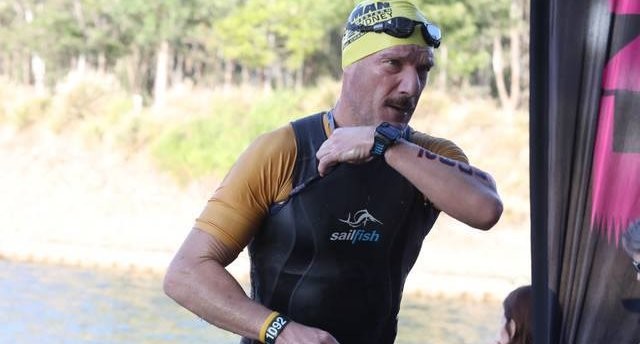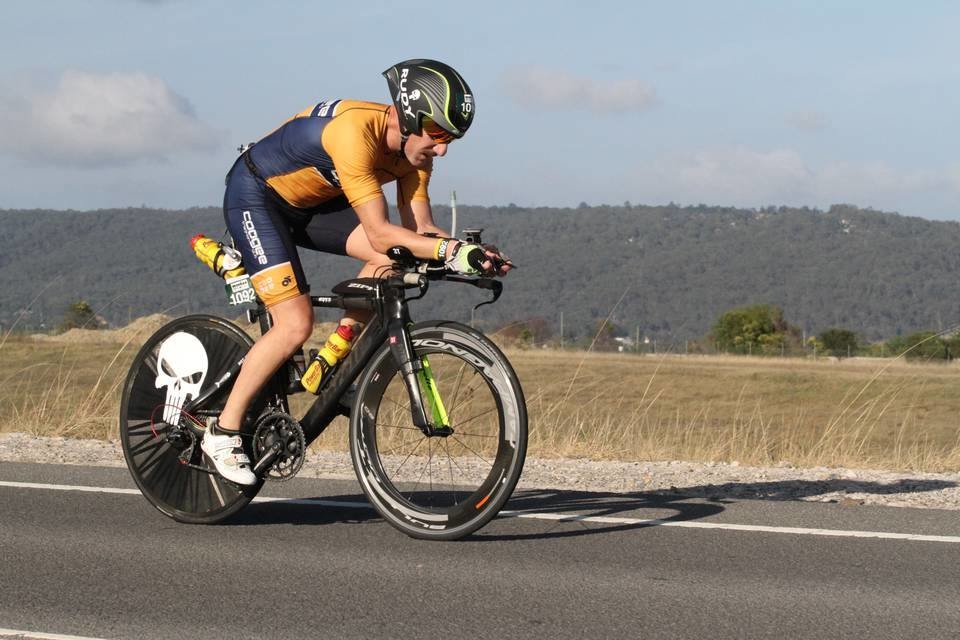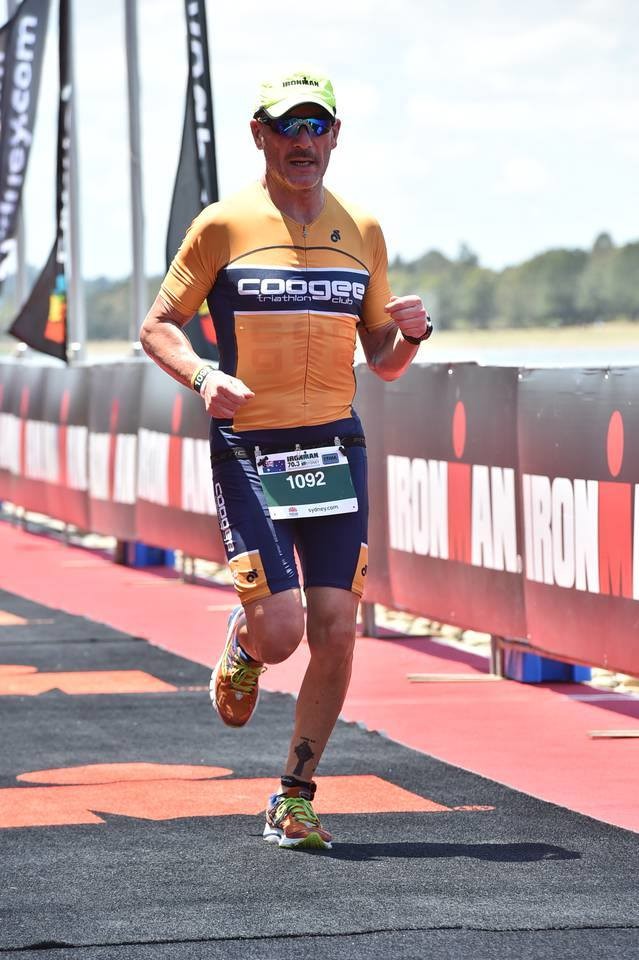I tried with a simple introspective exercise and a comparison between two souls that complement myself to fix some concepts that fundamentally support my WHY? Suffering is a part of every endurance sport, but above all, suffering is part of life, it is a situation that sooner or later we are called to face and not avoid putting our head under the sand like ostriches. Learning to deal with the discomfort, doubt and pain of race day can help you attain your true potential, Learning to train in dealing with difficulties is a powerful tool that allows us to get up after falls and become resilient.
Marzio Q : – HOW DO I EFFECTIVELY CONTROL THE VOICE IN MY HEAD THAT’S TELLING ME TO SLOW DOWN? DO I TRY TO TURN THIS OFF OR CONTROL IT?
Sgt. Hartman A : – There are a few things to consider when that voice in your head starts telling you to slow down. The first is that it may be telling you to slow down because your body needs something. We sometimes feel emotions while we’re working hard and those emotions are actually trying to tell us to drink, eat, or your pace is too high and you need to slow down. Instead of “fighting” the voice, you want to recognize that it’s there and figure out what it’s trying to tell you. In my article about resilience “black or white and never gray” I talk about how we all have a little monster on one shoulder and a little athlete on the other and whichever one you feed is the one that’s going to get stronger and grow. Sometimes trying to “turn off” the monster voice takes more energy than it does to accept it and then counter it with your “inner athlete”.
Marzio Q : – ANY TIPS FOR HOW I CAN FIND THE BALANCE BETWEEN GIVING TOO MUCH AND NOT ENOUGH IN A RACE? AM I BETTER TO WAIT UNTIL 15 MINUTES BEFORE THE FINISH AND EMPTY THE TANK?
Sgt. Hartman A : – A lot of athletes don’t realize that they haven’t pushed themselves as hard as they can go until they get to the end of the race and still have some left in the tank. Part of the reason people hold back is because many athletes find themselves “risk averse” and opt to play it safe versus risking the possibility of pushing so hard that they don’t finish where they want to. If you’re trying to figure out the balance you might try asking yourself during the race, “Can I give 1% more?” That way you’re playing with where the line is, but not necessarily pushing too far past it. The more you race and try out different strategies, the more you will learn how you operate and figure out what the best strategy is for you. Pick out some B priority races where your goal is to try out a strategy and see how your body responds. Use them as training races and don’t worry about the outcome.
Marzio Q : – HOW OFTEN DO YOU RECOMMEND WE “TRAIN FOR THE PAIN”?
Sgt. Hartman A : -I wouldn’t necessarily recommend that you do it for every workout. Some training days need to just be fun. You can approach your training for suffering similar to periodization in that there may be times when you’re focused on it more intensely than others. Working on your mental game takes energy and your brain needs recovery just as much as your body does.
Marzio Q : – WHEN WORKING AT THRESHOLD (SUFFERING!) FOR A LONG TIME, I FIND THERE CAN BE A POINT WHERE I CRACK AND SETTLE FOR A LESS THAN TARGET GOAL. WHAT STRATEGIES CAN YOU SUGGEST THAT MIGHT DELAY THIS CRACK POINT?
Sgt. Hartman A : – When you’re pushing yourself to the limit one of the natural things that happens for many athletes is that you start bargaining with yourself. When you’re in the middle of a race and working hard it can be difficult to tell if the bargaining means that you are appropriately adjusting your goal or if it means that you are backing off because you’ve cracked. It reminds me of a quote by General George S. Patton who also happened to be an Olympic Pentathlete, “Now if you are going to win the battle, you have to do one thing. You have to make the mind run the body. Never let the body tell the mind what to do. The body will always give up.” Sometimes if you can just wait long enough to get through that moment when you want to stop, it can be enough to keep you going. This would have to be a strategy that you’ve practiced and that you’ve committed to before your race. It can be waiting until the next marker and taking a deep breath, it can be singing through a song, it can be visualizing your favorite scene from your favorite comedy in detail … anything to get you to hold on for a moment instead of immediately feeding into the desire to stop. The moment when you start to crack, if you can commit to doing something else first, and then deciding if you can keep going, sometimes it can get you through that moment– or prolong it just a bit.
Marzio Q : – HOW CAN I IMPLEMENT A MENTAL STRATEGY TO OVERCOME ADVERSE WEATHER CONDITIONS?
Sgt. Hartman A : – This is a great question because it’s suffering of a different kind. The biggest mental strategy you can use when it comes to weather is to first, accept that it is out of your control and second, everybody has to deal with it. Another strategy is to make sure that you train in adverse weather conditions. My main sport was rugby and now for three years now, at the venerable age of 53, long distance triathlon. When I was playing rugby to train at a combat sport to face the one-on-one situation and the weather I fell in the field as a ring and boxed with a friend of mine, boxer coach, on winter days with adverse weather conditions. Today, training the IRONMAN races, I choose two training partners, loneliness and Belzebù !!! Belzebù is the master of hell. Hell is the metaphor of a place where suffering is represented by having to compete with yourself first, push hard yourself and challenge yourself with high temperatures.
Marzio Q : – WHAT CAN I FIX IN MY MIND LIKE MANTRA OR EASY CONCEPTS TO USE DURING A RACE TO STAY FOCUSED ?
Sgt. Hartman A : – Having mantras written in your mind can be a great technique for a few different reasons. One reason is that it can serve as a powerful trigger to help shift your focus from internal (up in your head) to external (back in the race). Under stress, whether it’s experienced as anxiety or suffering, many of us tend to bring our focus inward and get stuck in our thoughts. Having a visual trigger can help bring your focus outside of yourself and back into the moment versus feeling consumed with how hard the effort is. The other reason it’s a great technique is because it helps to send a message in the moment that you need it. Mantras that have the biggest impact are ones that are personally meaningful; that produce a visceral reaction when you read it. What do you need to hear when you’re pushing hard and want to stop?
You cannot climb the ladder of success with hands in pocket!



